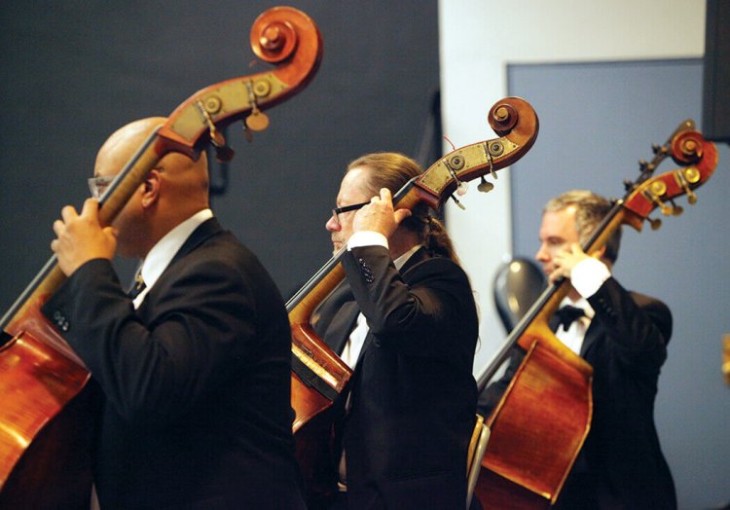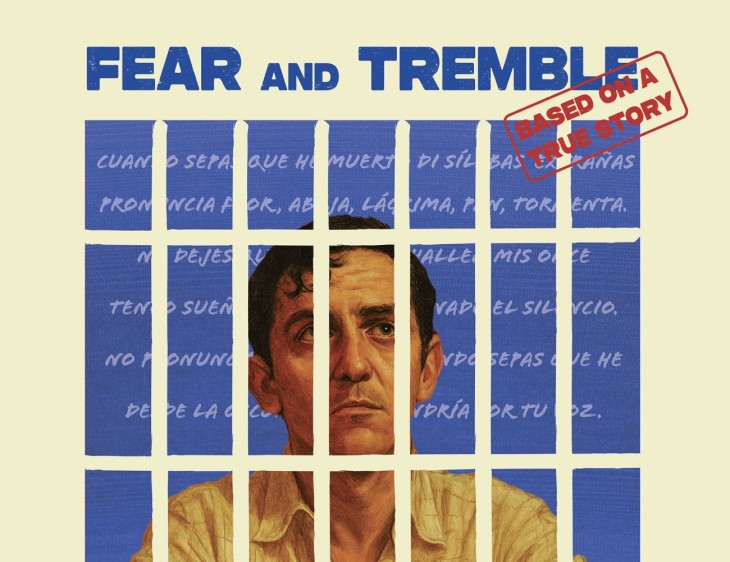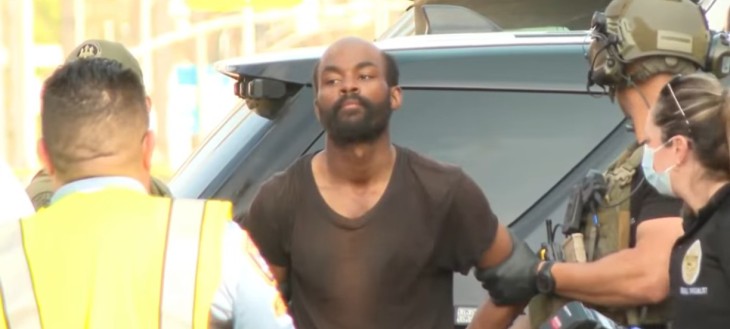By Dr. Paul Drew
Welcome to the first issue of volume four of Swish, a weekly periodical with recaps and photos of Santa Monica YMCA youth basketball games, and other pertinent info such as standings, schedules, announcements, and updates from the program.
With the summer heating up, it got hotter with the start of the Culver-Palms YMCA summer youth basketball league with the first games this past Saturday. The Santa Monica YMCA has two teams in each of the four divisions which are the 6-7 year olds, 8-9 year olds, 10-11 year olds, and 12-14 year olds.
The Culver-Palms league also has invited teams representing the Westchester YMCA and the Westside YMCA. Should be a fun summer of youth basketball. The goal will be to continue to help develop youth players with their skills and teamwork, building confidence, and enjoying the game of basketball.
The Santa Monica YMCA will be having registration, for the Fall Youth Basketball League, beginning on August 1st at the Santa Monica YMCA or online at http://welcome.ymcasm.org/programs/youth/sports-play/
The great Peter Arbogast, who resurrected the Santa Monica YMCA youth basketball program in 2011, bought to my attention the following article. As he told me, after sending me this article, to which I totally agree:
“I actually believe if you don’t play travel ball early, your chances of being a high school standout are greatly diminished. In the end though, it’s the same as always—you have to put in the work.”-Peter Arbogast
American Meritocracy Is Killing Youth Sports
Expensive travel leagues siphon off talented young athletes from well-off families—and leave everyone else behind.
NOV 6, 2018 by Derek Thompson, staff writer at The Atlantic
You could follow the money. Kids’ sports is a nearly $17 billion industry, which makes it larger than the business of professional baseball and approximately the same size as the National Football League. Or you could follow the kids. The share of children ages 6 to 12 who play a team sport on a regular basis declined from 41.5 percent in 2011 to 37 percent in 2017, according to a recent report from the Aspen Institute. Going back to 2008, participation is lower across categories, including baseball, basketball, flag football, and soccer, in some cases by a lot: Baseball is down about 20 percent.
The decline of youth sports participation is the sort of phenomenon that seems exquisitely tailored to exacerbate fears about the state of American childhood. One might suspect that the falloff is the result of children gravitating to video games, television, and other electronic distractions that don’t require an open field or a court. Perhaps athletics is just another legacy institution that can’t compete for attention anymore, like church, community centers, and bowling leagues.
But dig into the numbers, and a more complex, two-track story emerges. Among richer families, youth sports participation is actually rising. Among the poorest households, it’s trending down. Just 34 percent of children from families earning less than $25,000 played a team sport at least one day in 2017, versus 69 percent from homes earning more than $100,000. In 2011, those numbers were roughly 42 percent and 66 percent, respectively.
This isn’t a story about American childhood; it’s about American inequality.
“Kids’ sports has seen an explosion of travel-team culture, where rich parents are writing a $3,000 check to get their kids on super teams from two counties, or two states, away,” said Tom Farrey, the executive director of Aspen’s Sports & Society program. Expensive travel leagues siphon off talented young athletes from well-off families, leaving behind desiccated local leagues with fewer players, fewer involved parents, and fewer resources. “When these kids move to the travel team, you pull bodies out of the local town’s recreation league, and it sends a message [to those] who didn’t get onto that track that they don’t really have a future in the sport.” The result is a classist system: the travel-team talents and the local leftovers.
Unsurprisingly, the leftovers often lose interest. As Chris Moore, the executive officer of the U.S. Youth Soccer Association, told The New York Times, “If you can’t make a travel team, some kids may say, ‘What’s the point?’ and quit playing altogether.”
In short, the American system of youth sports—serving the talented, and often rich, individual at the expense of the collective—has taken a metal bat to the values of participation and universal development. Youth sports has become a pay-to-play machine.
Declining athletic participation is a prime example of how the choices even benevolent rich households make can hurt poorer families—especially their children.
As a general rule, rich parents in the United States don’t just spend more money on their kids; they spend a larger share of their income on their kids. (One could say that enrichment spending on children is a luxury good.) If you divide American households into five quintiles by income, the richest group earns about five times as much as the poorest, but spends about seven times as much on kids—about $9,300 to $1,300 per child. Income inequality, vast at the household level, is even vaster at the child-investment level.
It’s commendable for all parents—rich or poor—to love, and desperately want to help, their children. But not all expressions of love are harmless. In his 2017 book, Dream Hoarders, the economist Richard Reeves wrote that economic mobility in the U.S. has been declining in the past few decades in part because of “opportunity hoarding.” For example, rich parents may pull special levers to get their kids into hyper-select schools, or elite internships, or exclusive entry-level jobs. In so doing, they—in effect— snatch precious opportunities away from the less fortunate.
Parenting doesn’t have to be a zero-sum game, but it often is. As Matthew Stewart wrote in an Atlantic cover story this year on the new aristocracy, those in the nation’s upper-middle class have “taken their money out of productive activities and put it into walls”—physical walls and social barriers—that make it harder for any child not born into privilege to reach the same level of success.
In youth sports, many affluent parents have taken their children out of local gyms, put them onto planes, and shut the air-lock door behind them. “Many of the parents are not doing it with the intention to harm anyone, since they’re just trying to help their child,” Farrey said. “But they don’t think about the kids they’re leaving behind. They’re not thinking about what makes sense for the whole community.”
Well-off parents dedicate so much time and money to kids’ sports partly because of the college system, which dangles tantalizing rewards for the most gifted teenage athletes. In the 1990s, Division 1 and Division 2 colleges distributed about $250 million a year in full and partial scholarships to student athletes. Today that figure has grown to more than $3 billion. This scholarship jackpot gives some children from lower-income families a chance to attend schools they might not otherwise afford. But it also sends a clear message to richer parents looking to enhance their kids’ eventual application: Sports matter. As soon as some children enter second or third grade, their parents scramble to place them on youth travel teams, which will set them up for middle-school travel teams, which will set them up for high-school athletic excellence, which will make them more competitive for admissions and scholarships at select colleges.
The predictable rejoinder to the inequality of kids’ sports is basically: The system works just fine. Many famous athletes come from poor backgrounds, and some of them owe their careers to specialized super teams. Besides, one might argue, even though super teams for gifted and sufficiently wealthy young people might leave disadvantaged kids behind, this is simply the price that society must pay for excellence. It’s a version of a familiar conservative economic argument about the general economy: The U.S. has the world’s smartest people, because we celebrate success and punish indolence; so we should cut taxes on the rich and unwind collectivist welfare programs, which only dampen the nation’s competitive mojo.
But just as Europe offers alternative models for balancing equality and efficiency in the overall economy, it also offers alternative models for youth sports.
For example, Norway’s youth-sports policies are deliberately egalitarian. The national lottery, which is run by a government-owned company called Norsk Tipping, spends most of its profit on national sports and funnels hundreds of millions of dollars to youth athletic clubs every year. Parents don’t need to shell out thousands to make sure their kids get to play. And play is an operative word: Norwegian leagues value participation over competition so much that clubs with athletes below the age of 13 cannot even publish game scores. Remarkably, teams that release their scores online can face expulsion from the Norwegian confederation of sports.
It might seem like any country’s athletic prowess would atrophy under such socialist and anticompetitive policies. Instead, Norway is an athletic juggernaut. In the last Winter Olympics, the country won 39 medals—the most of any country in the history of the Games and nearly twice as many as the United States. It did so with a smaller population than Minnesota’s.
The U.S. sees itself as a land of winners bred by a culture of fierce competition that rewards success. But in youth sports, that competition doesn’t happen—excuse the metaphor—on a level playing field.
One way to address the class-related participation problem in youth sports is to tone down the competition that leads wealthy parents to pay for elite traveling leagues and unintentionally degrade the local leagues. In other words: Follow the Norwegian model.
Look at U.S. youth ice hockey, where participation has grown to an all-time record, according to the Sports & Fitness Industry Association. Among several possible factors—the NHL expanded recently into southern and western states, and the youth hockey organization banned body checking among players under 12— USA Hockey also recently eliminated national championships at the peewee (under-12) level to discourage parents from building super teams. “We felt it would be hypocritical for our sports to offer up an event that encourages people in the field to start to put together super teams at an early age,” said Ken Martel, the technical director of development at USA Hockey. At first, mothers and fathers complained, but “once it was eliminated, just crickets. People like it.”
Hockey parents thought they needed to win. But they were happy enough for their kids to just play.
Derek Thompson is a staff writer at The Atlantic, where he writes about economics, technology, and the media. He is the author of Hit Makers and the host of the podcast Crazy/Genius.
6-7 year olds
7/20/19: The Summer YMCA 7U season is officially off and running. The SM Stars came out ready to play vs a gritty Culver City team #1. Eight players, roughly half, of their 15 player roster were suited up for Santa Monica. During the 1st half the Stars grabbed a solid 10-4 lead. The 2nd half SM was much quieter adding just one basket while Culver City added 2 more plus a free-throw bringing it to 12-9 with SM Stars getting the 1st game of the season.
Stars were passing relatively well. Logan Cappiccille had 4 points and a few blocks, Tristan Hayes had 4 points, plus some rebounds, Luke Steelman added 2 points and played particularly consistent and tough defense. Sylvie Levitt also added 2 points and flexed her girl power all game. Laila Elliot, Benjamin Saunders, Colson Moore, and Elliot Israels all had multiple touches on the ball, held their own on defense, grabbed some boards, and helped for the 1st game and win of the season! Submitted by Coach Holden Hayes
Santa Monica YMCA Summer League vs Culver City YMCA Summer League. The Santa Monica Stars AKA Team 5, matched up with Team 3 in our first game of the summer league season.
Luca Anderson, Luca Samson, and Kai Badat led the way with tough defense and rebounding as well as scoring some quick baskets to help jump out to an early lead. Tough interior defense led to some opportunities in transition where the team’s unselfish play really shined.
Stellan Haberli and Theo DeCordoba also got in on the scoring with a basket each and played great perimeter defense picking up the Team 3 guards early. Both have been really working on their shooting in practice, and the hard work paid dividends.
Miles Smith and Oliver Harris stepped up and got involved as soon as they got on the court. Both Miles and Oliver contributed with their rebounding and passing to open teammates, helping to keep the game flowing and fun to watch for the fans.
Team 3 started the second half with a couple of baskets and looked to make a run. The team looked to Roman Gabriel and Dylan Geary to bring some more defensive energy to help maintain the momentum. With a couple of steals and defensive rebounds, both responded well and helped to secure Team 5’s first victory of the season. Final Score: Team 5: 16 Team 3: 4 Submitted by Coach Charles Ellinwood
8-9-year-olds
Coaches Bill Kravitz and Paul Drew set the line-ups.
Santa Monica Stars Team #1: At some point during Santa Monica’s third quarter onslaught the officials turned off the scoreboard, but not before Santa Monica (1-0) had more than doubled its 15-2 halftime lead on the way to a convincing win in their YMCA summer league opener.
As with all wins of this magnitude, it started on the defensive end. Santa Monica used its trademark aggressive man-to-man defense (albeit only within the 3-point line) to deter Culver City time and again and reduce them to a plodding, perimeter passing team with no real opportunities to score. Brandon Israels led the way: all over his man, getting several steals and defensive rebounds, and being a constant presence. Josie Casas, Veronica Machala and Sean Saunders also stood out for their focused, aggressive defense and constant communication with their teammates.
The offense was led by Theo Haberli, Wally Levitt and, thanks to several key offensive rebounds and putbacks – plus a confident made free throw in the first half – Machala. Haberli was lights out all afternoon, including a swished three-pointer and several mid-range pull-ups to go along with his dribble penetration and layups. Levitt appeared to surprise himself a bit by making his first three shots. He never let up, making a few more in the second half and contributing double figures. Jaxton Moore had a beautiful shot off the glass in the second half (all net) and contributed all day on both ends of the court. Miles Boelke and Ryan Schuster both handled the ball well, with terrific passing and playmaking. Most notable was a nifty between the legs pass by Boelke late, which led to a basket, as well as some beauties on the break. He set up several other teammates throughout the day, as did Schuster, who kept the defense honest all game. Aiden Lin arrived late but contributed in the second half with good ball movement and an assist or two as he asserted himself into the rhythm of the game.
A very enjoyable game to be a part of. Terrific defense, great team communication, plenty of passing, solid rebounding, and wonderful teamwork all day long. Santa Monica did not have its entire roster for this one. When at full force they should be a handful for their opponents all summer. Submitted by Coach Eric McDonough
After weeks of great practices, the Santa Monica Stars played their 1st game of the Summer League on Saturday against the Culver City YMCA team. With some of our veteran players out of town, the ten kids who played gave it their all in a fast paced game, featuring lots of fast breaks and layups. After a slow start, the kids started getting their rhythm. Ben Steelman and Joseph Zak each led the way with 4 points and countless blocks steals and rebounds. Dominic Drew, Bella Kariger, and Gavin O’ Brien also chipped in baskets, and Ryan Etemadnia contributed a late free throw. Vaughn Elliott, Jenson Montague, Dylan Kravitz and Chase Jenkins all played tough defense and hustled throughout the game. A 35-15 loss was a great learning experience for the team and one they will grow from, as the season goes on. Submitted by Coach Bill Kravitz
10-11 year olds
SAMO – 66, Culver – 12. Nathan and Adi, Petros Gordon McLean, Jace O’Brien, Dean and Jack Phalen were all big contributors to their first win of the summer. The Culver City team had a hard time breaking our zone defense and we found lots of ways to score. The pick and roll, the give and go and a number of fast breaks were effective for the SAMO team that has named themselves, “The Goats”.
I really tried to put the brakes on in the second half and softened our defense up, but the culver team had a hard time finding the bucket. Submitted by Coach Brian Phelan
12-14 year olds
The YMCA team #2 Lakers won their debut game 44-33 versus a strong Culver City team. The Lakers were down at the half by 3 but turned the tide in the second half with strong performance by Dash Decker who tallied 23 points 15 rebounds and at least 5 assist. Tommy Sorady and Estevan Rodriquez each scored 6 crucial points. Sebastian Ramirez had 8 rebounds. The entire team, 15 boys, picture attached, played hard on the defensive end with a full court press in the second half that turned the game around. Eli Levi and Sam Rubin were masterful in orchestrating the teams that they ran while on the court. Overall it was a great start to what we consider a very happy and unselfish team. The boys like playing with, and for each other. Submitted by Coach Mark Ulrich
The YMCA team #1 lost 32-25. Leading scorers were Nasir Luna, Drake Olivier and Keegan Fleigner.
Warmly, Coach Jim Fleigner
This Week’s Profile
Each week, Swish has a profile of a coach, player, or someone in the program who inspires all of us involved in Santa Monica YMCA basketball.
This week’s profile is of our U12 Santa Monica YMCA coach Brian Phelan and his sons Jack and Dean. Brian has been a coach in the youth basketball program for several seasons, alternating between coaching Jack or Dean, but now he gets to coach both boys on the summer team. Brian installs positive reinforcement with his players, and they all love him for a coach. Brian has a knack for finding the little things that his players do, such as setting picks, steals, passes, and rebounds. He lets his players know it by saying: “I see you! I saw that!” Jack and Dean are wonderful kids who always look to help their teammates by providing encouragement and showing tremendous enthusiasm for the game.
DocDrew: What do you enjoy most about playing basketball at the Santa Monica YMCA?
Jack: because it is so much fun!
Dean: because it gets competitive and the A and B tournament are really fun.
DocDrew: What are your most memorable moments in your basketball career at the Santa Monica YMCA?
Jack: winning the game with a game winning last second shot
Dean: winning the tournament A championship, and seeing my teammate being crowned MVP
DocDrew: Who are your favorite players and why?
Jack: Kevin Durant. because he is g00d.
Dean: Stephen Curry, LeBon James and Kawhi Lenard, because they all are great guys in general
DocDrew: What do you enjoy most about having your children play basketball at the Santa Monica YMCA?
Brian: I really enjoy seeing my kids learn how to work with other kids as a team. I’ve really enjoyed watching them improve along with so many of the other kids that have been playing with and against them. I’ve been lucky to have both my boys on the same team for one season, and it’s a joy that I get to see them play together once again this summer.
Thanks to the Phelan family for being supportive to the YMCA youth basketball program. They provide inspiration to our younger generation.
Thank you very much,
Dr. Paul Drew, youth basketball coordinator at the Santa Monica YMCA, editor and publisher of Swish


























